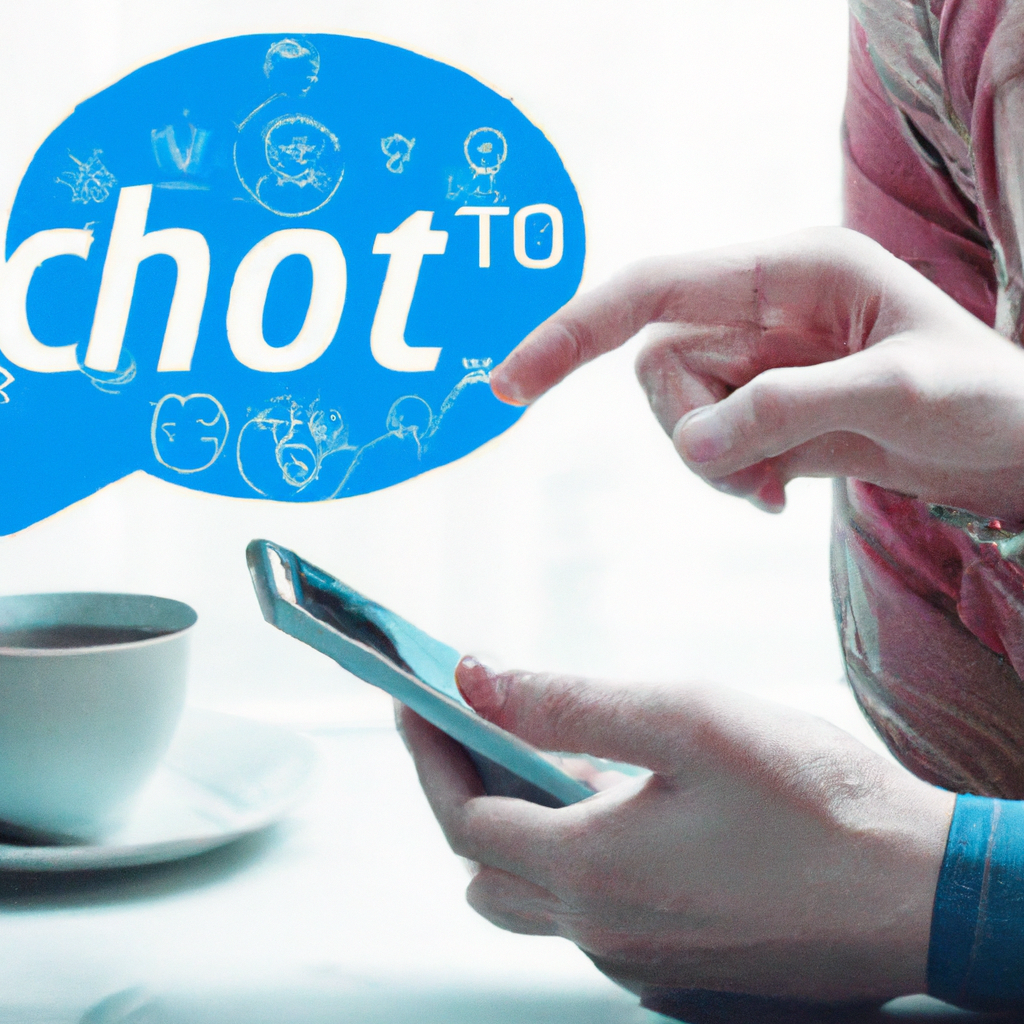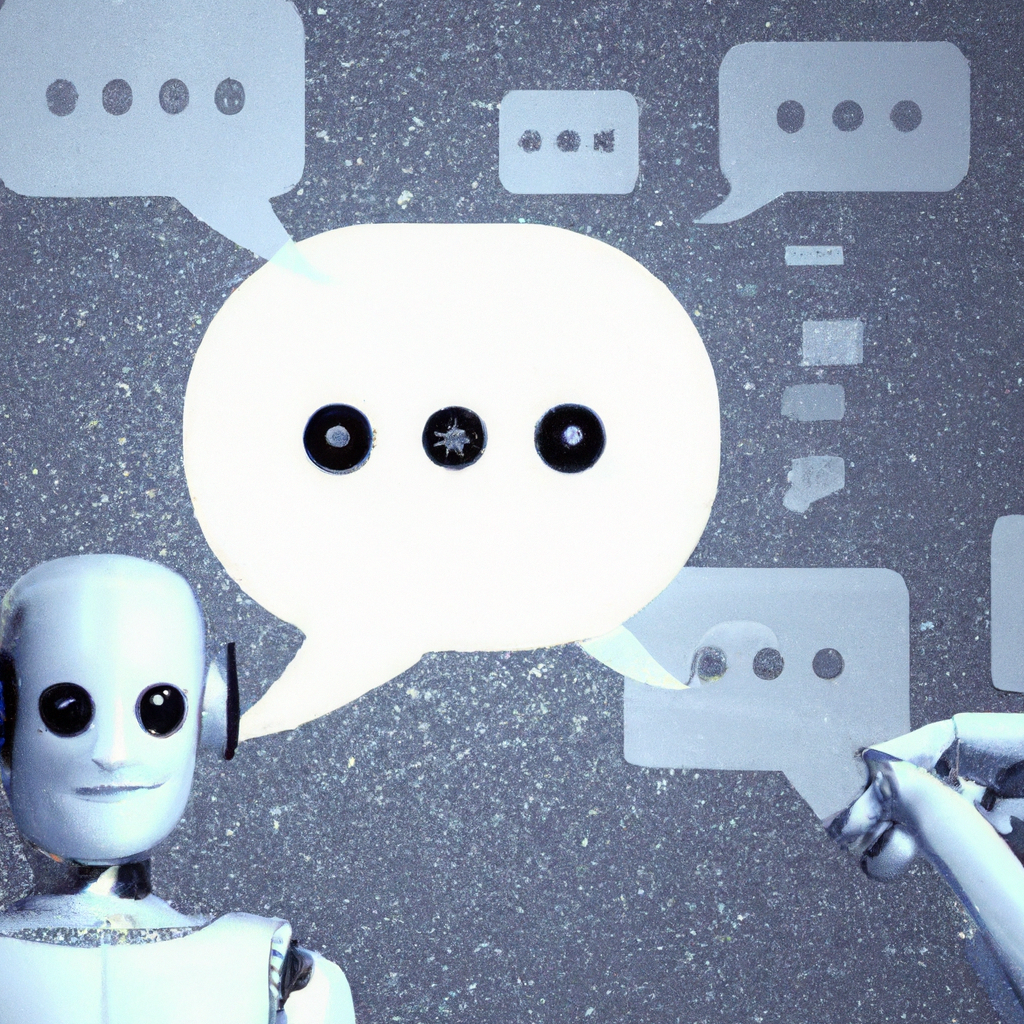Curious about how chatbots are shaping the job market? In this article, we’ll explore the impact of these AI-powered virtual assistants on employment opportunities. From streamlining customer service to automating repetitive tasks, chatbots have the potential to revolutionize the way businesses operate and transform the future of work. Join us as we delve into the evolution of chatbots and their implications for job seekers and professionals alike.

Introduction
Chatbots have become increasingly prevalent in today’s digital landscape, revolutionizing the way businesses interact with customers. These artificial intelligence-powered virtual assistants can simulate human conversations, providing instant responses and assistance. In this article, we will explore the definition, types, and workings of chatbots. We will also delve into the adoption of chatbots in various industries, discussing the advantages they bring to the job market, as well as the potential disadvantages. Lastly, we will explore strategies to mitigate the impact of chatbots and discuss the future outlook for this technology.
1. Definition of Chatbots
Chatbots, or chat robots, are computer programs designed to engage in conversations with humans via text or voice interfaces. These intelligent virtual assistants leverage natural language processing algorithms, machine learning, and AI techniques to understand and respond to user queries. By analyzing the context and intent of user inputs, chatbots provide personalized information, recommendations, or solutions.
1.1 Types of Chatbots
There are primarily two types of chatbots: rule-based chatbots and AI-powered chatbots.
Rule-based chatbots operate based on predefined rules and responses. They follow a decision tree or a set of if-then conditions to generate appropriate replies. Rule-based chatbots are limited in their ability to handle complex queries and require constant manual maintenance.
On the other hand, AI-powered chatbots utilize advanced machine learning algorithms and natural language understanding capabilities. These chatbots can learn from user interactions, evolve, and provide more contextually accurate responses. AI-powered chatbots can understand user intent, perform sentiment analysis, and even extract relevant information from unstructured data.
1.2 How Chatbots Work
Chatbots rely on a combination of technologies to interact with users effectively. When a user initiates a conversation, the chatbot’s backend system receives the message and processes it. Initially, the chatbot’s response is generated using predefined rules or a knowledge base. However, as the conversation progresses, the chatbot leverages machine learning algorithms to enhance its responses.
The chatbot analyzes the user’s input, extracts relevant information, and understands the intent behind the query. It then generates a suitable response by combining pre-existing knowledge with contextual understanding. Natural language generation techniques are used to construct human-like responses that are sent back to the user. This iterative process allows chatbots to continuously learn and improve their conversational capabilities.

2. Adoption of Chatbots in Industries
Chatbots have found numerous applications across various industries, transforming the way businesses engage with their customers. Let’s explore some of the sectors that have embraced chatbot technology.
2.1 Customer Service Industry
The customer service industry has been one of the early adopters of chatbots. Chatbots streamline customer interactions by providing instant assistance and resolving common queries. They can handle a high volume of customer inquiries simultaneously, reducing customer wait times and improving overall satisfaction. Chatbots in customer service can provide product information, process returns, schedule appointments, and even resolve complaints.
2.2 E-commerce Industry
In the e-commerce industry, chatbots are used to enhance the shopping experience and drive sales. Chatbots can help customers find products, recommend personalized items based on preferences, and provide real-time inventory and pricing information. Additionally, chatbots can handle transactions, track orders, and assist with customer support, improving efficiency and converting more leads into sales.
2.3 Banking and Financial Industry
Chatbots have made significant inroads in the banking and financial sector. They can perform a range of functions, including balance inquiries, funds transfers, bill payments, and fraud detection. Chatbots in banking provide customers with instant access to their financial information and can even offer financial advice and investment recommendations.
2.4 Healthcare Industry
In the healthcare industry, chatbots are increasingly being used to provide personalized medical assistance and improve patient outcomes. These chatbots can answer healthcare-related queries, schedule appointments, and monitor patient symptoms. They also have the potential to support mental health by offering empathetic conversations and crisis intervention.
2.5 Travel and Hospitality Industry
Chatbots are transforming the travel and hospitality industry by simplifying the booking process and enhancing customer experiences. They assist travelers with flight and hotel reservations, provide travel recommendations, and offer real-time updates on itineraries. Chatbots in the hospitality sector also enable guests to order room service, request housekeeping, and receive local area information.
2.6 Other Industries
Beyond the aforementioned industries, chatbots have found applications in various other sectors. They are used in HR departments for employee onboarding, training, and benefits assistance. Chatbots in education provide students with course information, study materials, and personalized learning support. In the entertainment industry, chatbots enhance user engagement by recommending movies, books, or music based on individual preferences.
3. Advantages of Chatbots in the Job Market
The increasing adoption of chatbots brings several advantages to the job market. Let’s explore some of the key benefits of utilizing chatbots in various industries.
3.1 Improved Customer Service
Chatbots offer businesses the opportunity to provide seamless and prompt customer service. By handling routine inquiries and frequently asked questions, chatbots free up human agents to focus on more complex and critical tasks. With chatbots offering consistent and accurate responses, customer service teams can deliver high-quality support, enhancing customer satisfaction and loyalty.
3.2 Cost Saving
Implementing chatbots in customer service and support functions can significantly reduce operational costs. Chatbots can handle a large volume of customer interactions simultaneously, eliminating the need for hiring and training more human agents. Moreover, chatbots can operate 24/7, reducing labor costs associated with maintaining round-the-clock customer support.
3.3 Efficiency and Productivity
Chatbots automate repetitive tasks, enabling faster processing and increased efficiency. They can quickly retrieve information from databases, assist with data entry, and perform routine transactions. This automation saves time and allows human employees to focus on more value-added activities, boosting overall productivity within organizations.
3.4 24/7 Availability
Unlike human agents who require breaks and sleep, chatbots can operate 24 hours a day, seven days a week. This ensures that businesses can provide continuous support and assistance to their customers, regardless of time zones or holidays. The constant availability of chatbots enhances customer experiences and helps businesses stay competitive in a global marketplace.
3.5 Data Collection and Analysis
Chatbots act as a valuable source of data collection for businesses. Through user interactions, chatbots gather insights about customer behavior, preferences, and pain points. This data can be leveraged to improve products, services, and marketing strategies. By analyzing chatbot-generated data, businesses can gain a deeper understanding of their customer base and make data-driven decisions.

4. Disadvantages of Chatbots in the Job Market
While chatbots offer numerous advantages, it is essential to acknowledge the potential disadvantages they may bring to the job market. Let’s explore some of the challenges associated with the widespread adoption of chatbots.
4.1 Job Losses
One of the most significant concerns surrounding chatbots is the potential displacement of human workers. As chatbots automate tasks previously performed by human agents, there is a risk of job losses in industries heavily reliant on customer service and support roles. However, it is important to note that chatbots also create new job opportunities in areas such as chatbot development, maintenance, and supervision.
4.2 Lack of Human Touch
Chatbots, no matter how advanced their AI capabilities, cannot replicate the warmth and empathy of human interactions. For some customers, this lack of human touch may result in a less satisfying experience. Businesses must balance the convenience and efficiency of chatbots with the need for personalized and compassionate customer support.
4.3 Language and Cultural Limitations
Chatbots may face challenges when communicating with users from diverse linguistic backgrounds or cultural contexts. Understanding slang, regional variations, or cultural nuances can prove difficult for chatbots. Language and cultural limitations can impact the accuracy of responses and potentially lead to misunderstandings or frustration among users.
4.4 Technical Issues and Limitations
Chatbot technology is still rapidly evolving, and technical issues may arise. Chatbots may encounter difficulties understanding complex or ambiguous queries, resulting in inaccurate or irrelevant responses. User input that deviates from expected patterns may confuse chatbots and hinder their ability to provide appropriate solutions. Additionally, chatbots may struggle with tasks that require subjective reasoning or high-level creativity.
5. Mitigating the Impact of Chatbots
To minimize the potential negative impact of chatbots on the job market, several strategies can be employed. These strategies aim to leverage chatbot technology while ensuring a balance between automation and human involvement.
5.1 Upskilling and Reskilling
As chatbots take over routine and repetitive tasks, employees can be provided with opportunities to upskill or reskill. Businesses can invest in training programs to equip their workforce with new skills that complement chatbot capabilities. By focusing on areas requiring human judgment, creativity, and emotional intelligence, employees can take on higher-value tasks that augment the capabilities of chatbots.
5.2 Job Redesign and Creation
As chatbots automate certain tasks, job roles can be redesigned to leverage the strengths of both humans and chatbots. Companies can redefine existing positions to focus on delivering more personalized and specialized services. Simultaneously, new job roles can be created to manage and enhance chatbot functionalities. By incorporating chatbots into job design, organizations can optimize efficiency while creating fulfilling careers for employees.
5.3 Collaboration between Humans and Chatbots
The true potential of chatbot technology lies in the collaboration between humans and chatbots. By combining the strengths of both, businesses can provide exceptional customer experiences. Human agents can focus on complex problem-solving, empathetic interactions, and relationship building, while chatbots handle routine tasks. This collaboration ensures that customer service remains personalized and efficient while maximizing the benefits of chatbot automation.

6. Future Outlook
As chatbot technology continues to advance, its role in the job market is expected to evolve. Let’s explore some potential changes and opportunities that lay ahead.
6.1 Evolving Role of Chatbots
Chatbots are likely to become more sophisticated, incorporating advanced natural language processing, sentiment analysis, and emotional intelligence. They will be better equipped to handle complex queries and engage in more nuanced conversations. As chatbots become more human-like, they will continue to complement and augment human capabilities, enhancing customer experiences.
6.2 Potential Job Market Changes
While there may be some job displacement due to chatbot adoption, new opportunities will arise in the field of chatbot development, maintenance, and oversight. Businesses will require skilled professionals to create, train, and supervise chatbot systems. Additionally, the demand for individuals with expertise in data analysis and machine learning will increase as businesses harness chatbot-generated data for strategic decision-making.
7. Conclusion
Chatbots have made a significant impact on the job market by revolutionizing customer interactions and streamlining business operations. While they offer numerous advantages, such as improved customer service, cost savings, and increased efficiency, chatbots also present challenges, including potential job losses and the absence of human touch. It is essential to mitigate these challenges by upskilling employees, redesigning job roles, and fostering collaboration between humans and chatbots. As chatbot technology continues to evolve, it is crucial to embrace its potential and navigate the future job market by leveraging the strengths of both humans and chatbots.

